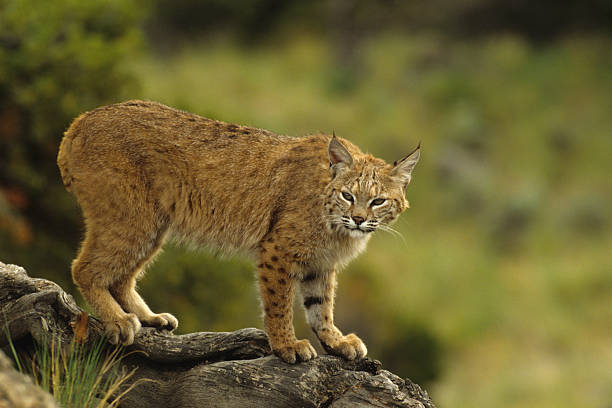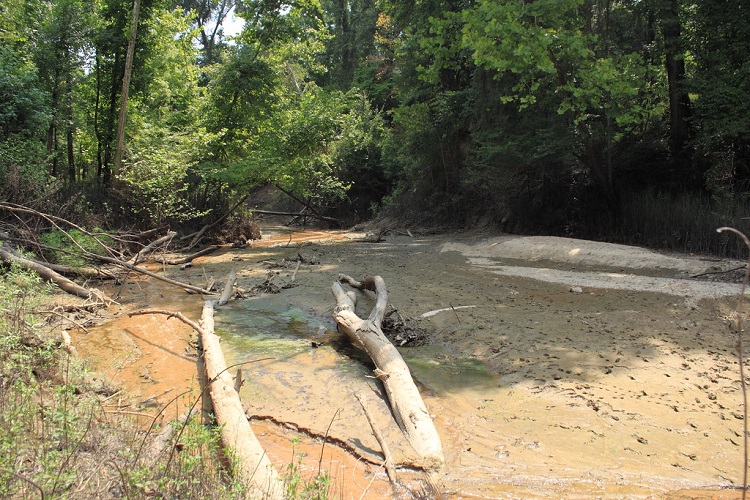The Great Smoky Mountains, straddling the border of North Carolina and Tennessee, are renowned for their rich biodiversity and breathtaking natural beauty. This vast mountain range, part of the Appalachian Mountains, boasts an incredible array of wildlife due to its unique climate, diverse habitats, and extensive conservation efforts. Here, we explore some of the fascinating animals that call the Great Smoky Mountains home.
1. Mammals of the Great Smoky Mountains
The Great Smoky Mountains are home to over 65 species of mammals, ranging from small rodents to large predators. These creatures thrive in the dense forests, rugged mountainsides, and open meadows of the park.
- Black Bear: The black bear is one of the most iconic symbols of the Great Smoky Mountains. With an estimated population of around 1,500, these animals are commonly spotted throughout the park. Weighing anywhere from 100 to 600 pounds, black bears are skilled climbers and swimmers, adapting well to the mountainous terrain and varying food sources, such as berries, nuts, and insects.
- White-tailed Deer: This graceful animal is frequently seen grazing in meadows and forests. White-tailed deer are known for their agility and the characteristic white underside of their tails, which they raise as a warning signal.
- Elk: Reintroduced to the park in 2001 after a long absence, elk have become a significant presence in the Great Smoky Mountains. Males are known for their impressive antlers, which can grow up to four feet wide. They are most active during the early morning and late evening.
- Bobcat: Although elusive and seldom seen, bobcats inhabit the dense forests and rocky areas of the mountains. These nocturnal predators feed on a diet of small mammals and birds.
- Red Fox: The adaptable red fox is known for its keen sense of hearing and agility. It hunts small animals like rabbits and rodents and can often be seen in the park’s open areas and woodlands.
2. Birds in the Smokies
The Great Smoky Mountains are a haven for birdwatchers, with over 240 recorded bird species. The diverse range of elevations and habitats provides a perfect breeding and migratory stop for many birds.
- Eastern Bluebird: This bird, with its bright blue plumage and reddish chest, is a common sight during warmer months. It frequents open fields and meadows, feeding on insects and berries.
- Pileated Woodpecker: One of the largest woodpeckers in North America, the pileated woodpecker has a striking black and white body and a bright red crest. Its distinctive drumming can be heard echoing through the forest as it searches for insects in decaying trees.
- Wild Turkey: Once on the brink of disappearing from the area, wild turkeys have made a strong comeback and are now a common sight. They roam in flocks, foraging for acorns, seeds, and insects.
- Bald Eagle: A symbol of strength and freedom, the bald eagle can be spotted near lakes and rivers in the park, especially during the winter months. These majestic birds are skilled hunters, feeding primarily on fish.
- Ruffed Grouse: Known for its unique drumming sound, the ruffed grouse is well-adapted to the dense forests of the Smokies and can be spotted foraging for seeds and insects.
3. Reptiles and Amphibians
The Great Smoky Mountains are especially renowned for their amphibian population. The park is often referred to as the “Salamander Capital of the World” due to the sheer diversity of these creatures.
- Eastern Box Turtle: This small, land-dwelling turtle is commonly seen in the park’s forests and grassy areas. It has a distinctive domed shell and can live up to 100 years.
- Hellbender: The hellbender is North America’s largest salamander and thrives in the clean, fast-moving streams of the Smokies. These unique creatures can reach lengths of up to 29 inches and play a crucial role in maintaining stream health.
- Red-cheeked Salamander: This amphibian is one of many endemic to the park, found only in specific high-elevation areas. It prefers moist, shaded environments and is known for its vibrant red cheeks.
- Timber Rattlesnake: Although venomous, the timber rattlesnake is generally shy and avoids human interaction. It can be found in rocky outcrops and woodlands and plays an important role in controlling small mammal populations.
- Northern Water Snake: This non-venomous snake is often found near streams, rivers, and lakes in the park. Its diet includes fish and amphibians, making it an important predator in the aquatic ecosystem.
4. Fish of the Smokies
The park’s waterways support over 60 species of fish, thriving in the clear, cold streams and rivers.
- Brook Trout: Also known as “speckled trout,” brook trout are native to the park’s higher elevation streams. They are known for their vibrant colors and are popular among anglers.
- Rainbow Trout: Originally introduced to the park in the early 20th century, rainbow trout have become well-established in lower elevation streams. They are prized for their agility and striking appearance.
- Smallmouth Bass: These fish prefer warmer waters and can be found in the lower reaches of the park’s rivers. Smallmouth bass are known for their fighting spirit, making them a favorite among sport fishers.
5. Insects and Other Invertebrates
The Great Smoky Mountains are also home to a vast array of insects and invertebrates, contributing to the park’s status as one of the most biodiverse regions in the United States.
- Synchronous Fireflies: Perhaps the most famous insects in the park, these fireflies put on a dazzling light show during their mating season each June. The synchronous flashing of their lights attracts thousands of visitors each year.
- Butterflies: With over 200 species, including the popular monarch butterfly, the Smokies offer a stunning array of colors and patterns. Many species can be seen feeding on wildflowers in meadows and along trails.
- Millipedes and Centipedes: These invertebrates play a vital role in decomposing organic material and enriching the forest floor. The park is home to numerous species, some of which are found nowhere else.
6. Conservation and Challenges
The Great Smoky Mountains face various conservation challenges, including habitat fragmentation, invasive species, and climate change. Park rangers and conservationists work tirelessly to protect the natural habitats and ensure that the park’s wildlife thrives for generations to come. Visitors are encouraged to practice responsible tourism by following guidelines to protect the park’s delicate ecosystem.
Conclusion
The Great Smoky Mountains are a testament to the richness of the natural world, boasting an array of animals that contribute to the unique character of this national park. From the iconic black bear to the delicate salamanders, each species plays a vital role in maintaining the park’s ecological balance.
The next time you visit the Smokies, keep an eye out for the wildlife that makes this park one of the most treasured biodiversity hotspots in the United States.


